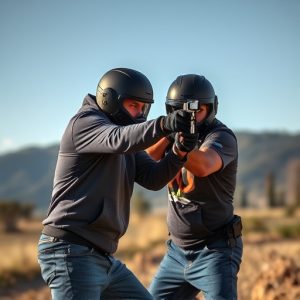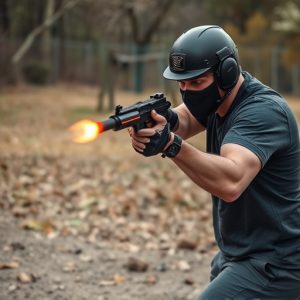Disguised Stun Guns: Pros, Cons, and Choices for Self-Defense
Projectile (stun guns) and contact (electroshock shields) stun weapons offer distinct benefits for s…….
Projectile (stun guns) and contact (electroshock shields) stun weapons offer distinct benefits for self-defense. Disguised stun guns, appealing for their concealability and non-lethal force, are an alternative to traditional self-defense tools. Legalities and effectiveness vary, but they provide a unique option for personal protection.
In the realm of personal safety, stun weapons have emerged as powerful tools for self-defense. Among them, projectile and contact stun devices offer distinct advantages. This article explores these key differences, focusing on disguised stun guns as self-defense tools. We delve into their pros and cons, considering factors crucial for effective deployment in various scenarios. Understanding these options equips individuals to make informed choices, enhancing their ability to protect themselves in today’s bustling world.
- Understanding Projectile and Contact Stun Weapons: Key Differences
- Disguised Stun Guns as Self-Defense Tools: Pros, Cons, and Considerations
Understanding Projectile and Contact Stun Weapons: Key Differences

Projectile and contact stun weapons represent two distinct approaches to self-defense tools, each with its own advantages and limitations. Projectile stun devices, such as stun guns or tasers, operate by firing an electrical charge at a target from a distance. These weapons are popular choices for personal protection due to their ability to disable an assailant temporarily without the need for direct contact, making them ideal for situations where discretion is crucial. For instance, a disguised stun gun can be easily carried as a fashion accessory, providing a covert self-defense solution.
In contrast, contact stun weapons, like electroshock shields or handheld tasers, require physical contact with the target to deliver a shock. They are more direct and visible in their operation but offer greater control over the force applied. While less discreet than disguised stun guns, contact weapons can be effective in close-quarters situations where speed and immediacy of response are paramount. Understanding these key differences is essential when considering which type of stun weapon best suits an individual’s self-defense needs and preferences.
Disguised Stun Guns as Self-Defense Tools: Pros, Cons, and Considerations

Disguised stun guns have emerged as a unique option for personal protection, offering both stealth and power in a compact form factor. These devices can be an attractive self-defense tool for individuals seeking non-lethal options to deter potential threats. The primary advantage lies in their ability to startle and incapacitate an aggressor without causing permanent harm, making them ideal for situations where the user prefers not to draw attention or carry conventional weapons.
However, there are considerations to keep in mind. Legal restrictions vary widely, and what may be legal in one jurisdiction could be strictly regulated or even illegal in another. Additionally, the effectiveness of a disguised stun gun depends on factors such as the device’s power output, range, and the user’s training—all of which can impact the level of protection it provides. Despite these nuances, for those seeking a concealed, non-lethal defense option, disguised stun guns present an intriguing alternative to traditional self-defense weapons.
In conclusion, both projectile and contact stun weapons offer unique capabilities for self-defense, with disguised stun guns standing out as versatile tools. While projectiles provide a safe range of protection, contact weapons ensure direct impact control. Disguised stun guns combine these elements, offering discreet self-defense solutions with varying pros and cons. When considering their use, it’s vital to evaluate personal safety needs, legal restrictions, and the potential for de-escalation in any situation.


